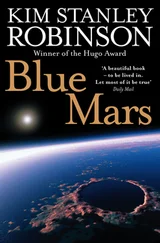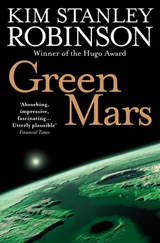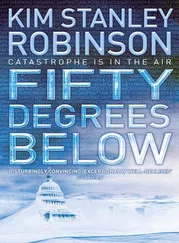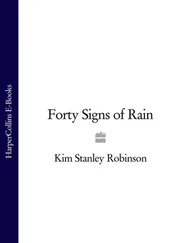All these adaptive abilities are coded and passed along in genes. If the genes mutate, the organisms change. If the genes are altered, the organisms change. Bioengineers use both these forms of change, not only recombinant gene splicing, but also the much older art of selective breeding. Micro-organisms are plated, and the fastest growers (or those that exhibit most the trait you want) can be culled and plated again; mutagens can be added to increase the mutation rate; and in the quick succession of microbial generations (say ten per day), you can repeat this process until you get something like what you want. Selective breeding is one of the most powerful bioengineering techniques we have.
But the newer techniques tend to get the attention. Genetically engineered micro-organisms had been on the scene only about half a century when the first hundred arrived on Mars. But half a century in modern science is a long time. Plasmid conjugates had become very sophisticated tools in those years. The array of restriction enzymes for cutting, and ligase enzymes for pasting, was big and versatile; the ability to line out long DNA strings precisely was there; the accumulated knowledge of genomes was immense, and growing exponentially; and used all together, this new biotechnology was allowing all kinds of trait mobilization, promotion, replication, triggered suicide (to stop excess success), and so forth. It was possible to find the DNA sequences from an organism that carried the desired characteristic, and then synthesize these DNA messages and cut and paste them into plasmid rings; after that cells were washed and suspended in a glycerol with the new plasmids, and the glycerol was suspended between two electrodes and given a short sharp shock of about two thousand volts: the plasmids in the glycerol shot into the cells, and voila! There, zapped to life like Frankenstein’s monster, was a new organism. With new abilities.
And so: fast-growing lichens. Radiation-resistant algae. Extreme-cold fungi. Halophylic bacteria, eating salt and excreting oxygen. Surarctic mosses. An entire taxonomy of new kinds of life, all partially adapted to the surface of Mars, all out there having a try at it. Some species went extinct: natural selection. Some prospered: survival of the fittest. Some prospered wildly, at the expense of other organisms; and then chemicals in their excretions activated their suicide genes, and they died back until the levels of those chemicals dropped again.
So life adapts to conditions. And at the same time, conditions are changed by life. That is one of the definitions of life: organism and environment change together in a reciprocal arrangement, as they are two manifestations of an ecology, two parts of a whole.
And so: black fuzz on the polar ice. Black fuzz on the ragged surfaces of bubbled rock. Pale green patches on the ground. Bigger grains of frost in the air. Animacules shoving through the depths of the regolith, like trillions of tiny moles.
At first it was nearly invisible, and very slow. With a cold snap or a solar storm there would be massive die-offs, whole species extinct in a night. But the remains of the dead fed other creatures; conditions were thus easier for them, and the process picked up momentum. Bacteria reproduce quickly, doubling their mass many times a day if conditions are right: the mathematical possibilities for the speed of their growth are staggering, and although environmental constraints – especially on Mars – keep all actual growth far from the mathematical limits, still, the new organisms, the areophytes, quickly reproduced, sometimes mutated, always died, and the new life fed on the compost of their ancestors, and reproduced again. Lived and died; and the soil and air left behind were different than they were before these millions of brief generations.
And so one morning the sun rises, shooting long rays through the ragged cloud cover, up the length of Valles Marineris. On the north wall every horizontal face is black and yellow and olive and gray and green, all with the warty surfaces of lichen. Plates of lichen drip down the vertical faces of stone, which stand as they always have, stony, and cracked, and red; but now mottled, as if with lace.
Michel Duval dreamedof home. He was swimming in the surf off the point at Villefranche-sur-Mer, the warm August water lifting him up and down. It was windy and near sunset and the water was a sloppy white bronze, the sunlight bouncing all over it. The waves were big for the Mediterranean, swift breakers that rose up all riven with wind chop to crash in quick uneven lines, allowing him to ride them for a moment. Then it was under in a tumble of bubbles and sand, and back up into a burst of gold light and the taste of salt in everything, his eyes stinging voluptuously. Big black pelicans rode air cushions just over the swells, soared into steep clumsy turns, stalled, dropped into the water around him. They half-folded their wings when they dove, making adjustments with them until the actual moment of the awkward crash into the water. Often they came up gulping small fish. Just meters from him one splashed in, silhouetted against the sun like a Stuka or a pterodactyl. Cool and warm, immersed in salt, he bobbed on the swell and blinked, blinded by salt light. A breaking wave looked like diamonds smashed to cream.
His phone rang.
His phone rang. It was Ursula and Phyllis, to tell him that Maya was having another fit and was inconsolable. He got up, put on unders and went to the bathroom. Waves leaped over a line of backwash. Maya, depressed again. Last time he had seen her she had been in high spirits, almost euphoric, and that was what, a week ago? But that was Maya. Maya was crazy. Crazy in a Russian way, however, which meant she was a power to be reckoned with. Mother Russia! The church and the communists both had tried to eradicate the matriarchy that had preceded them; and all they had achieved was a flood of bitter emasculating scorn, a whole nation full of contemptuous russalkas and baba yagas and twenty-hour-a-day superwomen, living in a nearly parthenogenic culture of mothers, daughters, babushkas, granddaughters. Yet still necessarily absorbed in their relationships with men, desperately trying to find the lost father, the perfect mate. Or just a man who would pull his share of the load. Finding that great love, and then more often than not destroying it. Crazy!
Well, it was dangerous to generalize. But Maya was a classic case. Moody, angry, flirtatious, brilliant, charming, manipulative, intense – and now filling his office like a huge slab of dejection, her eyes red-rimmed and bloodshot, her mouth haggard. Ursula and Phyllis nodded and whispered thanks to Michel for getting up so early, and left. He went to the Venetian blinds and opened them, and the light from the central dome poured in. He saw again that Maya was a beautiful woman, with wild lustrous hair and a dark charismatic gaze, immediate and direct. It was dismaying to see her this upset, he never got used to it, it contrasted too sharply with her usual vivaciousness, the way she would put a finger to your arm as she rattled on in a confiding tone about one fascinating thing or other …
All strangely mimicked by this desperate creature, who leaned forward onto his desk and began to tell him in a ragged hoarse voice about the latest scene in the unfolding drama of her and John, and then, again, Frank. Apparently she had gotten angry at John for refusing to help her in a plan she had to get some of the Russian-based multinationals to underwrite the development of settlements in Hellas Basin, which being the deepest point on Mars was going to be first to benefit from the atmospheric changes they were beginning to see. The air pressure at Low Point, four kilometers below the datum, was always going to be ten times thicker than that on top of the great volcanoes, and three times thicker than at the datum: it was going to be the first human-viable place, perfect for development.
Читать дальше












